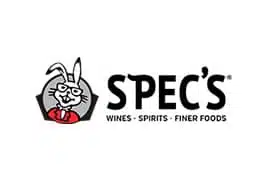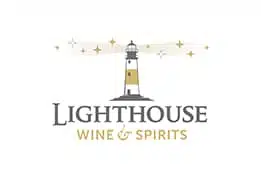Malbec World Day: #Malbec
#Your Malbec: share it your way
Join Malbec World Day
This April 17th, Malbec World Day, we celebrate the versatility of our star varietal, which distinguishes it and makes it unique. Each expression of Malbec is diverse, like each region of Argentina where it is produced. We invite you to find your own consumption style: fresh, light, young, premium, classic, aromatic, herbal, sophisticated, and to share it with your favorite people, in your favorite settings. There is Malbec for all tastes, enjoy it and share it your way!
The new styles of Malbec
Years of innovation in the vineyards, deepening understanding of the soils, and the accumulated experience of Argentine wineries have resulted in a new era of elegant, refined and subtle Malbecs. Argentina’s flagship variety offers an infinite range of flavors, styles and possibilities. Examples of this phenomenon aren’t hard to find: within the portfolio of a single Argentine winery there will be several different kinds of Malbec.
Your Malbec: unique in its category but with multiple different expressions
Malbec is the most widely cultivated variety in Argentina, the one with the highest production and the most demanded internationally. One of the main virtues of Malbec is its versatility, its ability to transparently reflect Argentina’s diversity. Every one of Argentina’s wine regions has its own unique identity and Malbec is a means of communicating that, which is precisely why it has so many diverse expressions. This capacity to adapt to different regions makes Malbec both one and many: unique in its category but with multiple different expressions.
We’re witnessing a new stage for Malbec in which it’s more versatile, fresher and delivers more herbal qualities, made in micro-regions and ever cooler areas. This evolution also means that Malbec is being used in many of Argentina’s best blends. Today, Malbec is the core of these world class assemblages, reflecting the skill of winemakers in Argentina who are finding an ideal balance between tradition and modernity to further burnish the reputation of the star variety.
In the universe of Malbec things never stand still and that is what makes it extremely exciting. This uniquely multifaceted variety is now being widely used in cocktails and vermouths, part of a recent trend among younger generations who are looking to consume less alcohol and seeking out creative, refreshing options.
Your Malbec: share it your way
On Malbec World Day, we want to celebrate the versatility of the flagship variety and the vast number of ways it can be enjoyed. This day is an invitation to find your own style and share it with the people you love the most, in your favorite places, with your favorite meals and listening to your favorite music.
Every glass and sip of Malbec is an individual expression embedded in a shared experience. It’s the freshness of a cocktail made with a glass of Malbec and ice on a summer’s evening, it’s the elegance of a glass paired with a special dinner, it’s the simplicity of a glass shared with friends at a festival… the essence of Malbec is connection and pleasure.
There’ll always be a Malbec waiting for you to discover: Your Malbec. Regardless of the kind of glass you choose to drink it from, it’s the occasion, your unique experience of Malbec and how you want to share it with the world that matter. Because, at the end of the day, it’s the moment, the people you’re with and the experiences you feel that really matter.
Find out more about #Malbec
Your Malbec: share it your way
Malbec reflects the
diversity of Argentina
Malbec reflects the diversity of Argentina
Advances in research, the expansion of a wine frontier and the search for identity in wine has led Malbec to show everything it is capable of, and the game is on to discover an inexhaustible range of Malbec profiles associated with the terroir.
Altitude: what makes us unique
Argentina has a handful of vineyards next to the Atlantic Ocean, but the bulk of its vineyards can be found between 600 and 2,000 meters (1,970 and 6,562 ft) above sea level in the West of the country. The highest point of Argentine viticulture reaches a staggering 3,329m (10,922ft), in the province of Jujuy.
This has caused several oases to develop at the foot of the Andes Mountains where the vines grow in very different conditions, all linked to the same factor: altitude. One of the factors that sets our wine apart is that it is the only country that incorporates altitude as a characteristic element of terroir.
Altitude regulates temperature and compensates for latitude. For every 150 meters (500 ft) of ascent the average temperature drops by 1ºC. So, between the northernmost (Jujuy) and the southernmost (Chubut) vineyards in Argentina there are 2,300 linear kilometres, the equivalent of going from Edinburgh to Marrakech or from Toronto to Havana, and the landscape changes as much as the profile of the wines. Changes that are interpreted as a terroir effect.
The altitude, combined with the latitude and proximity of the mountains gives life to a diverse range of Malbec profiles throughout Argentina. Discovering them is part of the adventure.
One. And at the same time many
Malbec is a variety of intense color, with shades of deep violet; aromas of red fruit, such as plums and cherries; notes of violet, spices and minerals. With oak ageing, it brings out chocolate, vanilla and tobacco flavours. In the mouth it is characterised by its softness and persistence and the sweetness of its tannins.
Since 2000, Argentine producers have begun to focus on origin, resulting in Malbecs that celebrate the identity of each terroir. Its noble and versatile character makes Malbec the variety that best reflects the diversity of Argentine wine regions.
The Argentine North stands out for its high altitude, low latitude and high insolation in the region, which gives Malbec a blackish color and a lot of intensity. Aromatically it is characterised by ripe black fruit and jam, combined with spicy notes of herbs or peppers, typical of the area. In the mouth it has marked tannins, excellent concentration, texture and very good length.
Located in the center-west of the country, the Cuyo region is influenced by the Andes Mountains, with varied altitudes and very heterogeneous soils. The Malbecs of Cuyo have a ruby reddish color. Aromatically they are characterised by the presence of fruits such as quince, figs and plums, and notes of caramel, wines with alcohol levels that generate sweetness and smoothness in the mouth.
In Mendoza, the departments of Luján de Cuyo and Maipú make up the Primera Zona (First Zone), the birthplace of Malbec. Here there are old plantations with remarkably good balance. The Malbec of this sub-region has a more reddish color and red fruits such as plums, cherries, raisins and some sweet floral notes such as violet stand out in the nose. The tannins of Luján de Cuyo are silky smooth and enveloping. They are also sweeter in the mouth.
The Uco Valley – made up of by the departments of Tunuyán, Tupungato and San Carlos – has colder nights and greater height. The Malbec of the Uco Valley has more vivid colors, with violet tints. A wider aromatic palette of red and black fruits appears, but also more acidic flavours such as cassis, blackberries, raspberries, currants, in addition to herbal notes such as jarilla, lavender, field herbs, resins and even some notes of graphite. In general, they are finer wines with marked acidity, which gives them greater freshness.
Patagonian Malbec achieves very good maturity due to the characteristics of the region: high latitude, lower altitude, sun and strong winds. Reddish-black hues are often perceived, and very ripe fruit aromas such as sweet red berries, jam, caramel and raisins, are noticeable in the nose. In the mouth they have high levels of tannins that give texture and structure to the wines.
The Atlantic region stands out for its pronounced thermal amplitude, its proximity to the ocean and the influence of its maritime winds, which give the Malbec intense red colors with violet hues. Wonderful aromas of liquorice, red fruits and the freshness of menthol. In the mouth this sensation of fruit and freshness is repeated, presenting itself as a stylish, elegant wine, with soft tannins and a long and delicate finish.
Malbec for experts
¡Your Malbec: share it your way!
Find your ideal Malbec
Discover the wide diversity of Argentine Malbec styles. In any corner of the world, you can find a Malbec to celebrate and share in your own way, to accompany your favorite dish, to toast at a festival, to make every occasion a unique and special moment. Here are some recommendations to make your search easier.
Find out where to buy Malbec in your country!
Scroll to see our favorite stores.
UNITED STATES ![USA]()
If you own or if you work for a store in the USA and you don’t find it listed, you can add it by completing this form.
UNITED KINGDOM ![UK uk]()
If you own or if you work for a store in the UK and you don’t find it listed, you can add it by completing this form.
BRASIL ![UK uk]()
If you own or if you work for a store in Brasil and you don’t find it listed, you can add it by completing this form.
The best companion
Malbec is loved for its versatility: its dynamic character is captivating. It adapts to an array of terroirs and offers styles for all dishes and palates. Always evolving, it invites us to continue enjoying it.
For all tastes
Malbec’s potential, given its nobility and versatility, has opened a completely new landscape for consumers around the world who are surprised by the nuances and styles of the variety. From structured and full-bodied to fresh, light and simple-bodied. Produced as white wine, rosé, bubbly and even as sweet wine, there is a #MalbecArgentino for each of us. This has been possible thanks to the ability of Argentine winemakers to extract the best of the varietal, maintaining a constant: its superlative quality and rich flavours are present in each bottle. But beyond the advances there is something that is certain: Malbec’s potential is such that the road has just begun…
Malbec: a partner for all dishes
There are many dishes in the kitchens of the world, and as many Argentine Malbec’s to pair with them.
For Malbec, it is the ideal pairing, not only because it represents the dish most adored by Argentines, but also their favorite wine. Of course there is a radical difference between an asado and a barbecue. The simplest of all is that asado is an institution where it’s all about fire and meat, in a social gathering. Several cuts of beef are cooked with different flavours and cooking times. An asado of entraña, costillas, vacío, chorizo and morcilla, will go very well with a glass of Malbec. No matter the style.
Outside of Italy, there are few countries where pizza is a serious matter. In Argentina, and particularly in Buenos Aires, which has the best pizzerias, it is something that can be debated for hours. What nobody disputes however, is that, if a wine is required to put fuel on the fire of a discussion about Mozzarella or Napolitana – two local specialties -, it will be a Malbec. Those that best accompany the sauces and cheeses are the light ones.
Italian tradition says that pasta is eaten every Sunday. It can be made at home, but is often bought from pasta shops found in each neighbourhood, town and city. Whether stuffed with ham and cheese, spinach and ricotta, or chicken, both Raviolis and Sorrentinos will pair with a fresh, medium-bodied Malbec.
A famous dish across America, from Mexico to Argentina, is a packet of corn leaves with various fillings boiled or steamed. Each region has a different version. In Argentina it’s very popular in the northwest, with ground beef or chicken, along with corn paste, all well seasoned. There’s the key: pair well with a spicy and corpulent Malbec from the Calchaquíes valleys (North).
Similar to the tamale in that the base ingredient is corn, and it is even wrapped in a leaf according to some versions. But unlike that, the taste of humita is sweet and spicy and doesn’t contain meat. It is also typical of the northwest. With this dish, what works best are Malbec Rosé wines, which bring freshness and fruit.
This Japanese snack is now a global meal: there are very few cities in the world that don’t offer a version of sushi. As with almost all Japanese food, the issue with this dish is in the balance between the taste of the products and the abundance of umami in the soy sauce, as well as in the contrast of perfumes from wasabi. Light Malbec Rosé, Provencal style, or even the growing trend of white Malbec.
The wok, with all its versions, is the most universal dish of Chinese food in the West. With Chop Suey, you can find almost anything finely chopped with wok sautéed rice. Depending on whether it is the main ingredient or is served with beef, pork, chicken or shrimp – it will have possible pairings. In each case, there is a Malbec to go with it, from the light and medium-bodied, such as those in colder areas, to refreshing rosés.
Find out more about Malbec
#MalbecArgentino
over time
Argentina is the main producing country of Malbec. Since 2011 it has been the most cultivated variety in the territory and the one that has increased its surface area the most in the last 20 years. But it has come a long way to become the emblem of our country and the paradigm of #VinoArgentino.
MWD
Malbec World Day (MWD) is a global initiative created by Wines of Argentina that seeks to position #MalbecArgentino in the world and highlight the success of our national wine industry.
Held for the first time on April 17, 2011, MWD managed to position itself as a historic event in the promotion of #VinoArgentino worldwide and is now part of the international calendar. This campaign has the support of the Ministry of Foreign Affairs, International Trade and Worship and the Argentine Wine Corporation (COVIAR), and is part of the Argentina 2020 Strategic Wine Plan.
Every year, Wines of Argentina organise an array of activities in the main export markets, in addition to events organised by Argentine representatives abroad and independent initiatives that place Malbec at the center of a global toast. The immense impact achieved by this activity has led to the experience being replicated within the country as well by the Provincial Governments of Argentina and local entities.
Learn more about the history of #MalbecArgentino
Malbec in numbers
There are many ways to recount a success: with a story, a tale or with numbers that describe trends. In terms of Malbec, numbers say more than words. These are the digits that define Malbec:
116,297
ac cultivated
116,297 acres is the surface planted with Malbec (for vinification) in Argentina up to 2024, which represents 25.5% of the total cultivated area in the country.
51.6%
increase in cultivated area
51.6% has grown the area planted with Malbec in Argentina from 2000 to 2024. Since 2010 Malbec is the most cultivated variety in the country and the one that has increased its surface the most.
4,024,101
quintals
4,024,101 quintals of Malbec were harvested in 2023, which means that it is the variety with the highest production in Argentina. Malbec represents 21.9% of the total grapes destined for production and 41.5% of the red varieties.
85.97%
Mendoza
Malbec is present in 15 of the 18 wine-growing provinces of Argentina. 85.97% of Malbec corresponds to Mendoza, by far the most important province in terms of this varietal.
1,269,489
hl exported
In 2024, 1,269,489 hectoliters of Malbec were exported, equivalent to 429.75 million dollars. The main destination market for Malbec is the USA., followed by the United Kingdom and Brazil.
124
countries
124 countries have received at least one shipment of Malbec in the last year (2019). The one that received the most was the United States, with 2.9 million boxes; the least, Ethiopia, with about three units. Among the highlighted destinations, we must mention the United Kingdom, with 1,6 million boxes, Brazil, with 734,141 units, and Canada, which reached 632,446. The highest average price per box was achieved by South Korea, with 202,80 US dollars (Source: Caucasia Wine Thinking).
10,922 ft
highest vineyard
10,922 feet a.s.l. / 3.329 m.a.s.l, the highest Malbec vineyard in Argentina. It is located in the town of Uquía, Jujuy, in the northwest of Argentina, and while we’re on records, between the vineyards of the northernmost Malbec (Jujuy) and the southernmost (Chubut), there are 2,300 linear kilometres. These are -of course- extreme points, since Malbec’s epicentre is concentrated in an area around latitude 33º South.











